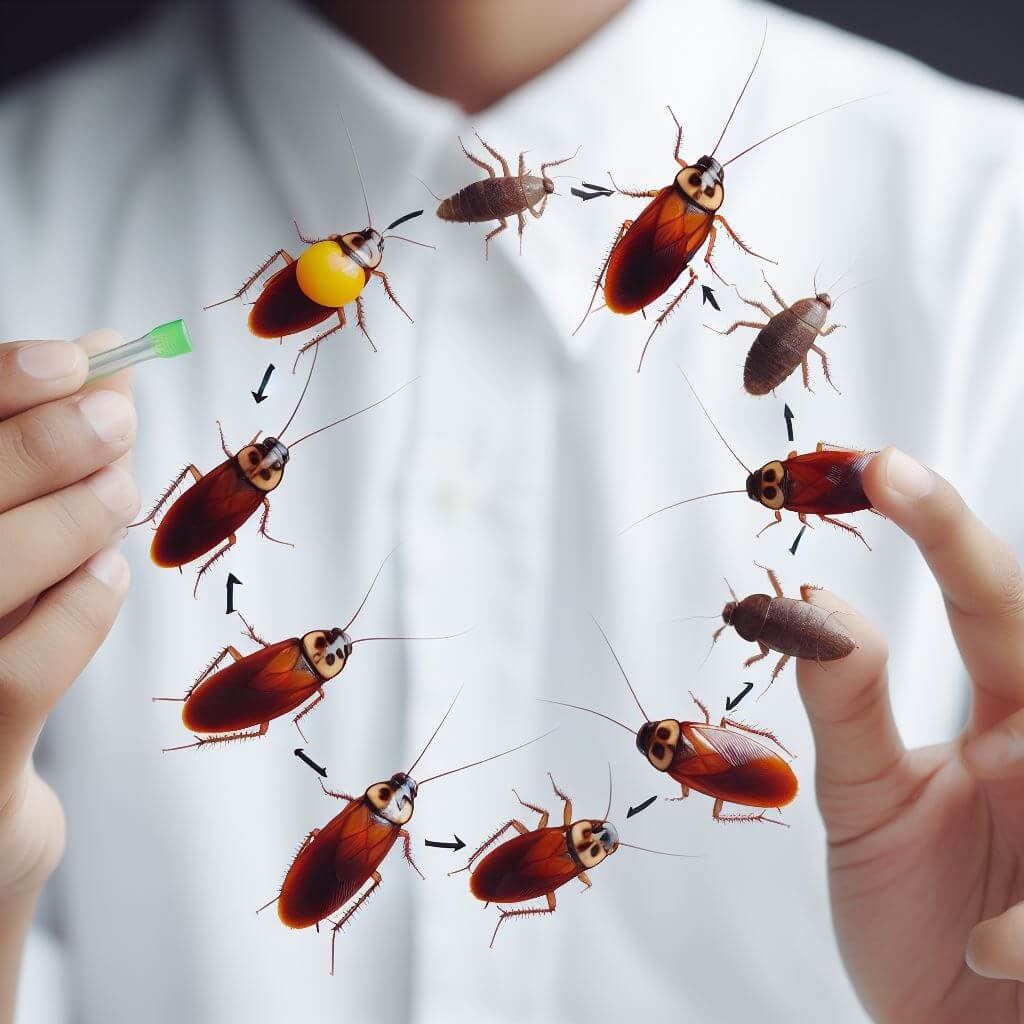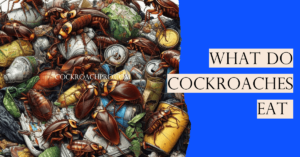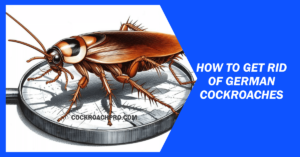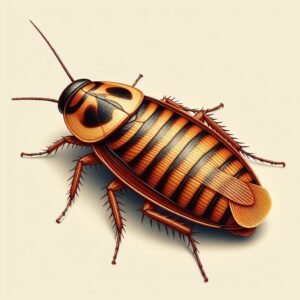Are you wondering what attracts cockroaches and ruins your private life? The answer lies in this article.
Cockroaches are ubiquitous pests that can easily infest homes and commercial spaces. But what exactly attracts roaches in the first place? There are several key elements that draw cockroaches and enable them to establish thriving colonies. Understanding the main roach attractants is key for effective prevention and control.
Here are 8 things that attracts cockroaches
Food Sources That Attract Cockroaches
Cockroaches are adept scavengers drawn to a wide variety of food sources. Their broad palates and resilient bodies allow them to feast on items that would make humans sick.
1. Crumbs and Spills
Roaches forage anywhere they can access crumbs and residue. Food particles as minute as 0.15 mm can sustain roaches. Any crumbs from meals, unfinished pet food, or spills build up and become a food patch. Sugars, grease, starches, meat products and dairy items are choice cockroach fare.
With their flattened bodies, roaches easily squeeze into tiny cracks and crevices hunting for nourishment. Cabinets, pantries, drawers, behind and under appliances are hot spots. Vigilant cleaning is vital, as is sealing off access points to deny shelter and food supply lines.
2. Pet Food
Pet food bowls can become cockroach hangouts even when little or no food is visible to humans. Roaches are equipped with organs that detect pheromones signaling food sources. So faint traces draw them in.
Any moist pet food particles stuck to the bowl are also a magnet. Bowls should be washed thoroughly after each feeding. Storage containers should be airtight, and uneaten wet food should not be left out.
3. Garbage and Waste
Another unfortunately common attractant is garbage and waste. Dumpsters and trash cans containing food scraps or waste draw colonies seeking an easy meal.
Cockroaches also gather wherever there is rotten waste material, including plumbing leaks or drips accumulating buildup with organic matter. Sewers and drains with cracks or missing screens provide moist habitats and food resources.
Water Sources
Water is a crucial resource driving roach movement. They cannot survive long without it. Numerous water sources attract and sustain roach populations.
4. Leaky Fixtures
Faulty plumbing equipment often signals “open for business” to foraging roaches. This includes leaky pipes, faucets, cracked toilet bowls, and dripping drain lines. Roaches drink the water and feed on algae, mold or organic buildup.
To roaches, plumbing leaks indicate a hospitable humid habitat. Be proactive in sealing drips or seepage within 24 hours before roaches homestead the space. Monitor under sinks for water tracking or accumulations where roaches may hide and breed.
5. Sinks and Tubs
Cockroaches also drink from standing water in sinks, tubs and showers. Any vessels holding water for bathing, hand washing or dish washing can bring roaches to drink, especially in drier environments.
They explore these areas seeking humidity and hydration. Routinely dump all standing water and use drain plugs when not actively using a sink or tub to prevent roach influx.
Warm Shelter
Cockroaches gravitate to sheltered spots providing warmth as they cannot regulate their own body temperature. Heat sources lead them to investigation as they seek habitats that sustain the colony.
6. Cracks and Crevices
Prime real estate to roaches means out-of-sight cracks, crevices and holes allowing clandestine run of vital resources. Small cracks allow access inside walls, cabinets, floor joints or ceilings.
Holes around electric sockets or under kitchen appliances give roaches warm, humid shelters to breed and spread. Use caulk or sealants on cracks, install door sweeps beneath doors, and seal gaps in walls/floors. Eliminating access/hiding spots is instrumental in controlling infestations.
7. Insulation and Dark Spaces
Well-insulated and darker spaces also attract roaches providing comfort and camouflage for their living and breeding activities. Wall voids, attics and crawl spaces allow colonies to grow unchecked.
Place insect monitors in secluded zones during preventative inspections. Call an exterminator if populations explode, as removal is extremely difficult without professional treatment. Maintain vigilance not to bring cardboard boxes or debris inside which may harbor roaches.
Pheromones
Once an advance team of roaches designates an area as prime real estate through chemical secretions, aggregations descend rapidly. Two types of roach pheromones escalate infestations.
8. Sex Pheromones
Male roaches give off sex pheromones to attract mates to their harborage. Females follow the scent and join to boost the ranks. Each fertilized female births 20-40 offspring every few months. A local explosion follows.
Aggregation Pheromones
Both male and female roaches produce aggregation pheromones. These chemical cues signal prime feeding grounds, breeding spots and harborage to other members of their species. The more roaches gathered, the stronger the pheromone cloth guiding others to the same zone.
A positive feedback loop forms signaling protected, resource-rich housing. Other roaches quickly boost the numbers – forming infestations challenging to disrupt. Removing roaches without stopping the chemical cues risks new ones filling the void. Integrated pest control includes pheromone disruption for sustainable prevention.
what attracts cockroaches in bedroom?
Cockroaches may be attracted to bedrooms by various factors, primarily drawn to sources of food, water, and shelter. Crumbs, food residues, or unsealed containers can provide sustenance, while water sources such as leaky pipes or damp areas are enticing for their survival. Clutter or hiding spots in bedrooms, such as piles of clothes or papers, offer ideal shelter for these nocturnal insects. Maintaining cleanliness, sealing food, and addressing moisture issues can help deter cockroaches from infesting bedrooms.
what attracts large cockroaches?
Large cockroaches, like the American cockroach or the Oriental cockroach, are typically attracted to environments with ample food, water, and shelter. They are particularly drawn to organic matter, such as food crumbs, grease, or leftover pet food.
Dark and damp spaces, like basements or crawl spaces, appeal to them for shelter. Leaky pipes, standing water, or high humidity levels also create favorable conditions. Proper sanitation, sealing food containers, fixing water leaks, and reducing clutter can help minimize factors that attract large cockroaches. Regular cleaning and maintenance are crucial for preventing infestations in and around living spaces.
what attracts cockroaches the most?
Cockroaches are primarily attracted to three key factors: food, water, and shelter. They are particularly drawn to any available food sources, including crumbs, spills, and unsealed food containers. Standing water, leaky pipes, or high humidity levels also attract them, as cockroaches need water for survival. Additionally, they seek shelter in dark and secluded spaces, such as cracks, crevices, and cluttered areas.
what attracts cockroaches in apartments?
Cockroaches can be attracted to apartments by a combination of factors. Common attractants include accessible food sources, such as crumbs, spills, and open food containers. Poorly sealed garbage bins and food waste can also lure them. Also cockroaches in most cases I have observed can be brought in the apartments by new tenants.
Additionally, standing water or damp areas, often resulting from leaky pipes or inadequate ventilation, provide an attractive environment. Dark and cluttered spaces, including behind appliances or within unused boxes, serve as ideal hiding spots for cockroaches. So, Proper cleaning is a must to avoid attracting these creatures.
what attracts cockroaches outside?
Outside, cockroaches are attracted to various elements in the environment. Natural food sources such as decaying organic matter, compost, and plant debris can be enticing. They are also drawn to sources of standing water, including puddles, leaky outdoor faucets, or clogged gutters. Warm and humid areas, such as mulch beds and garden spaces, provide favorable conditions. Also, outdoor lighting can attract certain cockroach species.
The Bottom Line
Cockroaches are highly adaptable pests combining tough bodies with behavioral mechanisms to locate and occupy prime habitat and food resources. Cutting off entry points, cleaning vigilantly, controlling moisture and shutting down chemical messaging are proven methods to curtail roach haven establishments long-term. With attention to roach attractants, prevention is indeed the best medicine to avoid infestations.





